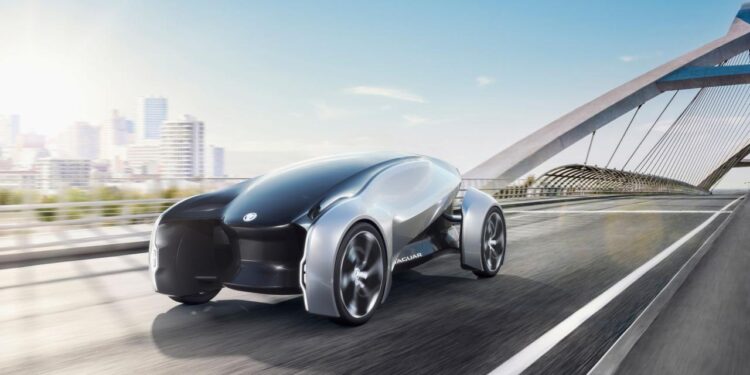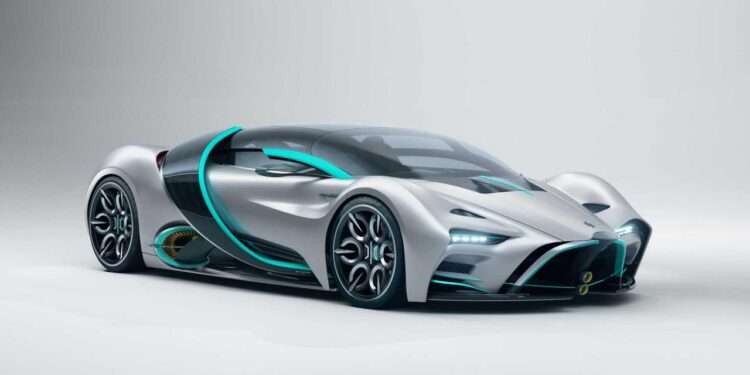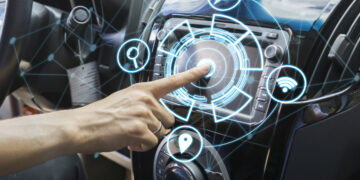The automotive landscape is evolving at a breakneck pace, propelled by innovative technologies and shifting consumer expectations. Today’s vehicles are far more than mere transportation devices; they embody sophisticated engineering, cutting-edge digital technology, and an unwavering focus on sustainability. With the increasing prominence of electric, hybrid, and autonomous vehicles, the industry is entering a transformative era where efficiency, environmental responsibility, and safety take center stage. In this article, we delve deep into the evolution of auto trends, exploring the emergence of electric and hybrid powertrains, the strides being made in autonomous driving, and how these developments are reshaping our roads and cities. We will also analyze market dynamics, technological breakthroughs, regulatory challenges, and future outlooks that promise to redefine mobility for generations to come.
The Evolution of the Automotive Industry
The journey of the automotive industry spans over a century of innovation and transformation. From the early days of steam-powered carriages to the advent of internal combustion engines, the evolution of automobiles has always been intertwined with technological progress and societal needs. The current wave of change is no different; it represents a radical shift towards cleaner, smarter, and more connected vehicles.
Historically, the focus was primarily on mechanical performance and mass production. However, as concerns about climate change and urban congestion grew, the industry began to pivot towards sustainability and efficiency. Today’s auto trends are driven by three main pillars:
A. Electrification: The move from fossil fuels to electric power sources is a major milestone, reducing carbon emissions and dependency on nonrenewable energy.
B. Hybridization: By combining internal combustion engines with electric propulsion, hybrid vehicles offer a practical bridge between traditional and fully electric models.
C. Autonomy: Self-driving technologies are poised to revolutionize transportation, promising increased safety, convenience, and efficiency on the roads.
The Rise of Electric Vehicles (EVs)
Electric vehicles (EVs) have emerged as a cornerstone of modern mobility. By harnessing electricity stored in batteries rather than relying on gasoline or diesel, EVs present a cleaner, more sustainable alternative to traditional vehicles. The growing popularity of EVs is attributable to several factors:
A. Environmental Benefits
Electric vehicles offer a significant reduction in greenhouse gas emissions, which is vital in the fight against global warming. Their operation produces zero tailpipe emissions, contributing to improved air quality in urban environments. As governments worldwide implement stricter emissions standards, EVs become an increasingly attractive option for both consumers and manufacturers.
B. Technological Advancements
Recent breakthroughs in battery technology, such as improvements in lithium-ion chemistry and the emergence of solid-state batteries, have extended driving ranges and reduced charging times. Innovations in power electronics and thermal management have also enhanced overall vehicle performance. Key features of modern EVs include:
A. Extended Range: New battery systems allow drivers to travel greater distances on a single charge.
B. Rapid Charging: Cutting-edge fast-charging stations are reducing downtime and making EVs more convenient for long journeys.
C. Smart Energy Management: Advanced software optimizes battery usage, prolonging battery life and ensuring efficient energy consumption.
C. Economic Incentives
To accelerate the adoption of electric vehicles, many governments have introduced policies such as tax credits, subsidies, and rebates. These incentives are designed to offset the higher upfront costs associated with EV technology and encourage consumers to embrace greener transportation alternatives.
D. Charging Infrastructure
A robust and accessible charging network is essential for the widespread adoption of EVs. Investments in charging infrastructure, both public and private, are expanding rapidly. Key aspects include:
A. Urban Charging Hubs: Cities are developing designated charging areas to serve densely populated regions.
B. Highway Fast-Charging Stations: Strategic placement of fast-charging facilities along major highways alleviates range anxiety for long-distance travelers.
C. Home Charging Solutions: Residential charging stations offer convenience and cost savings for everyday commuting.
The Emergence of Hybrid Vehicles
Hybrid vehicles serve as a critical transitional technology, blending the benefits of internal combustion engines (ICE) with electric propulsion. They have gained widespread acceptance due to their ability to balance performance with fuel efficiency.
A. Understanding Hybrid Technology
Hybrid cars typically use a combination of a traditional gasoline engine and an electric motor to power the vehicle. This dual-system approach allows for optimized performance under different driving conditions. The primary advantages of hybrid vehicles include:
A. Improved Fuel Efficiency: By relying on electric power during low-demand situations, hybrids significantly reduce fuel consumption.
B. Reduced Emissions: The combination of electric and combustion power results in lower emissions compared to conventional vehicles.
C. Seamless Performance: Modern hybrids offer smooth transitions between power sources, ensuring a responsive and dynamic driving experience.
B. Types of Hybrid Systems
The automotive market features a range of hybrid configurations, each designed to meet varying consumer needs:
A. Mild Hybrids: These vehicles use an electric motor to assist the engine, providing a modest boost in efficiency without full electric propulsion.
B. Full Hybrids: Capable of operating solely on electric power at low speeds, full hybrids offer greater fuel savings and reduced emissions.
C. Plug-In Hybrids (PHEVs): These vehicles can be charged from an external power source, allowing for extended electric-only driving ranges before switching to hybrid mode.
C. Market Growth and Consumer Adoption
Hybrids have become a popular choice for consumers seeking a balance between eco-friendliness and performance. As technology continues to improve, hybrid vehicles are becoming more affordable and accessible. Manufacturers are investing heavily in research and development to enhance hybrid systems, ensuring they remain competitive in a rapidly evolving market.
Autonomous Vehicles: The Future of Driving
Autonomous, or self-driving, vehicles represent one of the most disruptive innovations in automotive technology. These vehicles rely on an intricate network of sensors, cameras, radar, lidar, and artificial intelligence (AI) to navigate roads without human intervention. While full automation is still on the horizon, current advancements in driver-assistance systems are paving the way for a safer and more efficient driving experience.
A. Levels of Autonomy
Autonomous driving is classified into several levels, ranging from Level 0 (no automation) to Level 5 (full automation). Understanding these levels is crucial to grasping the current state and future potential of autonomous vehicles:
A. Level 1 – Driver Assistance: Basic features like adaptive cruise control and lane-keeping assist are common in many modern vehicles.
B. Level 2 – Partial Automation: Vehicles can control steering and acceleration/deceleration, but the driver must remain engaged at all times.
C. Level 3 – Conditional Automation: Cars can handle certain driving tasks under specific conditions, though human intervention is still necessary in complex situations.
D. Level 4 – High Automation: Vehicles can operate autonomously in most environments without human input, but may have restrictions in extreme conditions.
E. Level 5 – Full Automation: The ultimate goal, where vehicles are entirely self-sufficient and can navigate any environment without human intervention.
B. Technologies Behind Autonomous Driving
The development of autonomous vehicles is underpinned by a blend of hardware and software innovations. Key components include:
A. Sensor Fusion: Combining data from multiple sensors to create a comprehensive understanding of the vehicle’s surroundings.
B. Advanced Computing: High-performance processors and cloud computing facilitate real-time decision-making and route optimization.
C. Machine Learning and AI: These technologies enable continuous improvement in vehicle performance by analyzing vast amounts of driving data and adapting to new scenarios.
D. Connectivity: Vehicle-to-everything (V2X) communication systems allow autonomous vehicles to interact with other vehicles, infrastructure, and pedestrians, further enhancing safety and efficiency.
C. Safety and Regulatory Considerations
While autonomous vehicles hold the promise of reducing accidents and improving traffic flow, they also pose significant challenges. Ensuring the safety of self-driving systems is paramount, and regulatory bodies are actively developing frameworks to address these issues. Challenges include:
A. Cybersecurity: Protecting vehicles from hacking and data breaches is critical to maintain trust in autonomous systems.
B. Ethical Dilemmas: Autonomous vehicles must be programmed to make complex ethical decisions in emergency situations.
C. Liability and Insurance: The question of who is responsible in the event of an accident—a manufacturer, software developer, or driver—remains a contentious issue.
D. Infrastructure Readiness: Upgrading roads and traffic management systems to support autonomous vehicles is a significant logistical challenge.
Market Dynamics and Consumer Trends
The convergence of electric, hybrid, and autonomous technologies is fundamentally reshaping the auto industry. Consumers are increasingly drawn to vehicles that offer a blend of efficiency, sustainability, and advanced safety features. Several market dynamics are driving this trend:
A. Shifting Consumer Preferences
Modern consumers are more environmentally conscious and tech-savvy than ever before. They seek vehicles that not only reduce their carbon footprint but also offer smart connectivity and enhanced convenience. Key consumer preferences include:
A. Sustainable Mobility: A growing demand for eco-friendly transportation options that minimize environmental impact.
B. Advanced Safety Features: Increasing importance placed on vehicles equipped with state-of-the-art driver-assistance and safety technologies.
C. Smart Connectivity: Desire for seamless integration with digital ecosystems, including mobile devices, smart homes, and wearable technology.
D. Cost Efficiency: While upfront costs for advanced technologies may be higher, lower operating expenses and government incentives make these vehicles economically attractive over time.
B. Industry Investments and Partnerships
The auto industry is witnessing unprecedented investments from traditional automakers, technology companies, and venture capital firms. Collaborations and strategic partnerships are becoming more common as stakeholders work together to overcome technical and regulatory challenges. Key investment areas include:
A. Battery Technology Research: Significant funds are being allocated to improve battery life, reduce charging times, and enhance safety.
B. Autonomous Systems Development: Investments in sensor technology, AI algorithms, and computing hardware are accelerating the progress toward fully self-driving vehicles.
C. Infrastructure Expansion: Public and private entities are collaborating to build comprehensive charging networks and modernize road systems to accommodate new auto trends.
D. Sustainable Manufacturing: Efforts to reduce the environmental impact of vehicle production through recycling initiatives and the use of eco-friendly materials are gaining momentum.
Environmental Impact and Sustainability
The shift towards electric and hybrid vehicles is a cornerstone of global efforts to combat climate change. Traditional internal combustion engine (ICE) vehicles are a significant source of air pollution and greenhouse gas emissions. By transitioning to cleaner alternatives, the automotive industry is playing a pivotal role in environmental sustainability.
A. Reducing Carbon Footprint
Electric vehicles produce zero tailpipe emissions, which dramatically lowers the amount of harmful pollutants released into the atmosphere. Additionally, when combined with renewable energy sources, EVs can further reduce overall carbon footprints. Hybrid vehicles, which optimize fuel efficiency by using both electric and combustion power, also contribute to this reduction.
B. Resource Efficiency
Modern auto trends are not just about cleaner emissions—they also focus on efficient use of resources. Innovations in battery recycling, lightweight materials, and energy-efficient manufacturing processes are contributing to a more sustainable production cycle. These developments ensure that the environmental benefits extend beyond just the operation of the vehicle.
C. Government and Corporate Initiatives
Governments around the world are implementing policies to support sustainable transportation, including tax breaks, grants, and stricter emissions standards. Simultaneously, corporations are committing to greener practices, investing in renewable energy sources, and striving to achieve carbon neutrality. This dual approach helps to create an ecosystem where sustainability is at the forefront of every innovation.
Technological Innovations Driving Auto Trends
The remarkable pace of technological advancement is the engine behind the current auto trends. Several innovations are transforming how vehicles are designed, manufactured, and operated:
A. Battery and Energy Storage Advancements
The evolution of battery technology is crucial to the success of electric and hybrid vehicles. Modern batteries offer longer ranges, faster charging times, and enhanced safety features. Developments in solid-state batteries and improvements in lithium-ion technology are set to revolutionize the energy storage landscape.
B. Smart Manufacturing and IoT Integration
The adoption of Industry 4.0 technologies has streamlined vehicle production, making manufacturing processes more efficient and environmentally friendly. The integration of the Internet of Things (IoT) in manufacturing enables real-time monitoring and predictive maintenance, reducing downtime and costs.
C. Connectivity and Data Analytics
Modern vehicles are increasingly becoming data hubs on wheels. Connectivity technologies allow vehicles to communicate with each other and with road infrastructure, enhancing safety and traffic management. Data analytics play a vital role in optimizing performance, enabling manufacturers to refine designs and improve vehicle efficiency based on real-world usage patterns.
D. Software-Defined Vehicles
The concept of software-defined vehicles is transforming the automotive industry. Vehicles are now capable of receiving over-the-air (OTA) updates that enhance functionality, improve safety features, and even add new capabilities. This shift towards a more software-centric approach ensures that vehicles remain current with technological advancements long after they have left the production line.
Regulatory Framework and Policy Developments
The rapid pace of innovation in the automotive sector requires a robust regulatory framework to ensure safety, security, and fair market practices. Governments and regulatory bodies worldwide are actively working to develop policies that address the unique challenges posed by electric, hybrid, and autonomous vehicles.
A. Emission and Safety Standards
Stringent emissions standards are driving manufacturers to develop cleaner, more efficient vehicles. Additionally, safety regulations are continuously evolving to incorporate the latest advancements in autonomous and driver-assistance technologies. These standards help protect consumers while also encouraging innovation.
B. Incentives for Green Mobility
To accelerate the adoption of sustainable vehicles, many countries offer financial incentives such as tax rebates, subsidies, and grants. These measures reduce the overall cost of ownership and encourage consumers to transition from traditional ICE vehicles to more environmentally friendly alternatives.
C. Data Privacy and Cybersecurity Regulations
With vehicles becoming more connected, issues related to data privacy and cybersecurity have come to the forefront. Regulatory bodies are establishing guidelines to ensure that consumer data is protected and that vehicles are safeguarded against cyber threats. This is critical for maintaining public trust as the industry moves toward greater automation and connectivity.
Challenges and Opportunities
While the future of auto trends looks promising, several challenges must be addressed to fully realize the potential of electric, hybrid, and autonomous technologies. At the same time, these challenges present unique opportunities for innovation and growth.
A. Technological Hurdles
Developing reliable and efficient battery systems, achieving full autonomy, and ensuring robust cybersecurity measures are among the key technological challenges. Overcoming these hurdles requires continued investment in research and development as well as collaboration between industry stakeholders.
B. Infrastructure Limitations
The success of electric and autonomous vehicles is heavily dependent on the availability of supporting infrastructure. Expanding charging networks, upgrading road systems, and creating dedicated lanes for autonomous vehicles are critical steps that governments and private entities must undertake.
C. Consumer Adoption and Perception
Changing consumer behavior is no small feat. Many potential buyers remain hesitant due to concerns over range anxiety, high upfront costs, and unfamiliarity with autonomous technologies. Educating consumers and demonstrating the long-term benefits of these innovations will be essential in driving widespread adoption.
D. Economic and Market Pressures
The automotive industry is subject to global economic fluctuations and competitive pressures. Manufacturers must balance the need for innovation with cost management and market realities. However, these pressures also spur creativity and drive the development of cost-effective, scalable solutions.
Future Outlook and Industry Predictions
Looking ahead, the trajectory of automotive trends points toward a future of unparalleled innovation and transformation. Several emerging trends are poised to shape the industry in the coming years:
A. Integration of Renewable Energy
As the world shifts toward renewable energy sources, the automotive industry will increasingly integrate solar, wind, and other green energy solutions into vehicle design and charging infrastructure. This integration will not only reduce dependency on fossil fuels but also create a more resilient and sustainable energy ecosystem.
B. Advanced AI and Machine Learning Applications
The continuous improvement of AI and machine learning algorithms will enhance the capabilities of autonomous systems, making self-driving vehicles safer and more efficient. These technologies will also play a pivotal role in predictive maintenance, optimizing vehicle performance and reducing downtime.
C. Emergence of Mobility-as-a-Service (MaaS)
Mobility-as-a-Service is set to revolutionize transportation by providing consumers with flexible, on-demand mobility solutions. By integrating electric, hybrid, and autonomous vehicles into a unified platform, MaaS aims to reduce private car ownership, alleviate traffic congestion, and improve urban mobility.
D. Cross-Industry Collaborations
The future of automotive innovation will be shaped by collaborations between traditional automakers, technology companies, energy providers, and urban planners. These partnerships will drive the development of integrated solutions that address the complex challenges of modern transportation.
E. Global Policy Harmonization
As countries adopt similar environmental and safety standards, global policy harmonization will create a more predictable and competitive market. This alignment will facilitate the international exchange of technology and expertise, accelerating the pace of innovation across borders.
Conclusion
The automotive industry stands at the threshold of a transformative era defined by electric, hybrid, and autonomous technologies. These trends are not only reshaping how we drive but also how we perceive mobility as a whole. With significant advancements in battery technology, smart manufacturing, connectivity, and AI, vehicles are becoming more efficient, sustainable, and safer.
While challenges such as infrastructure development, regulatory hurdles, and consumer adoption remain, the opportunities for innovation are vast. The transition to cleaner energy sources, the rise of self-driving systems, and the integration of advanced digital technologies herald a future where transportation is more adaptable and environmentally friendly than ever before.
To succeed in this rapidly evolving landscape, manufacturers, policymakers, and consumers must work collaboratively. Embracing change and investing in the next generation of automotive technologies will not only drive industry growth but also contribute to a more sustainable and connected world.
As we move forward, the auto trends of today will lay the foundation for tomorrow’s roads—a future defined by intelligent mobility, reduced emissions, and unprecedented convenience. The journey is just beginning, and the road ahead is filled with promise and potential.














